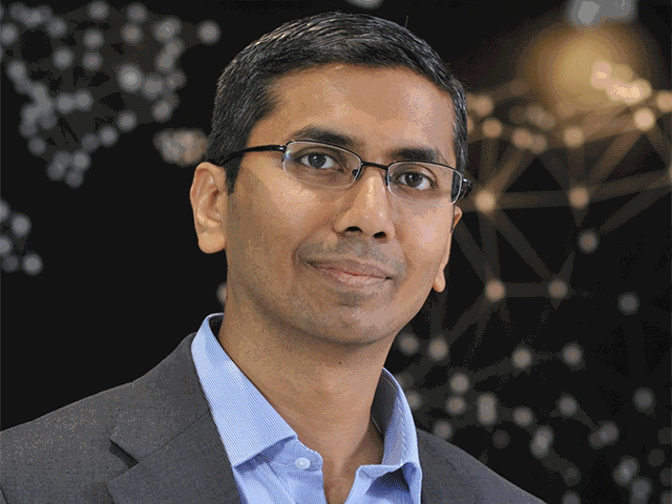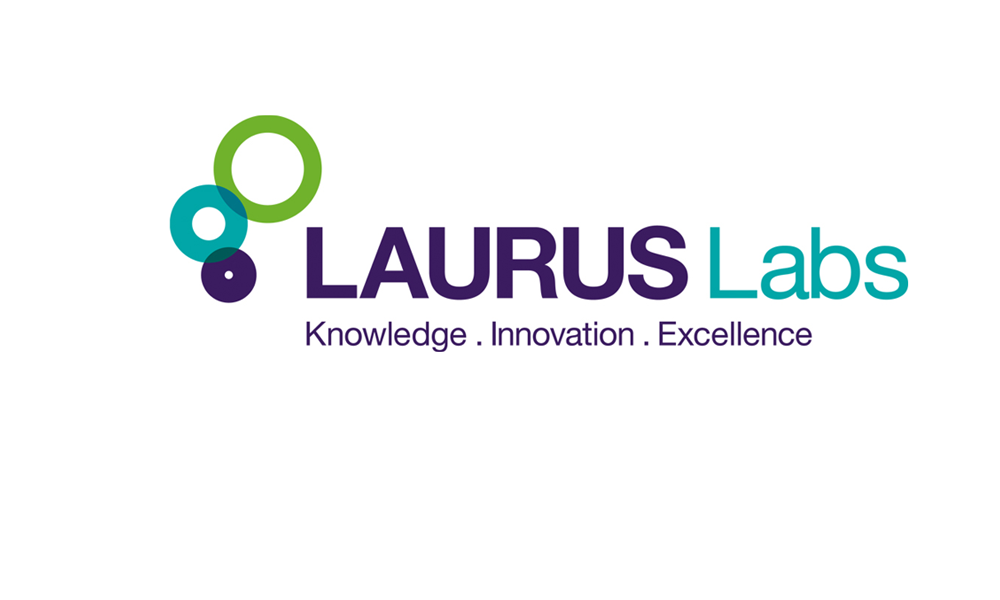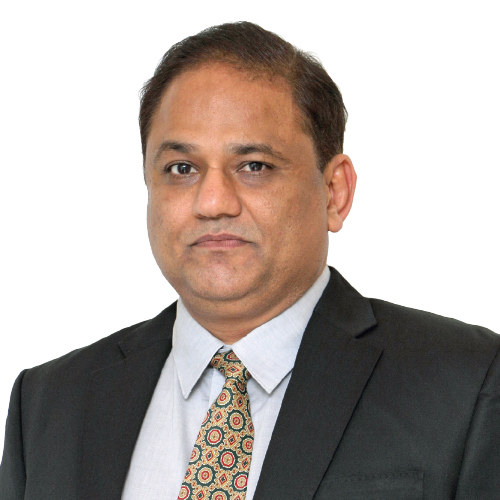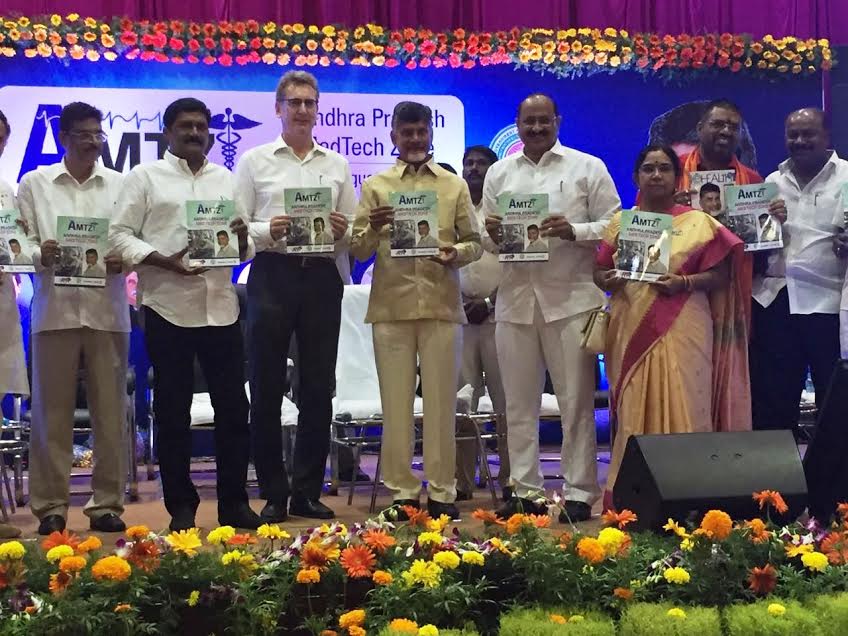Computer aided knee replacement surgery
 Computer aided knee replacement (also known as computer aided knee arthroplasty) is attracting a large number of medical tourist to hospitals in India. The less invasive nature of this medical procedure, will also help increase the popularity in India of the total and partial knee replacement surgeries. In this procedure, a computer is installed with medical surgery software and is connected to a surgery infrared camera and specialised surgical instruments. The surgeon, to perform the knee replacement, uses this “knee surgery computer system.” This allows for more precision and accuracy during the surgery. The surgeon can see the computer generated image real time while preforming the knee operation. The alignment of the knee replacement implant is more accurate (accuracy of 0.5 mm and 0.5 degrees) and predictable compared to surgery with naked eyes.
Computer aided knee replacement (also known as computer aided knee arthroplasty) is attracting a large number of medical tourist to hospitals in India. The less invasive nature of this medical procedure, will also help increase the popularity in India of the total and partial knee replacement surgeries. In this procedure, a computer is installed with medical surgery software and is connected to a surgery infrared camera and specialised surgical instruments. The surgeon, to perform the knee replacement, uses this “knee surgery computer system.” This allows for more precision and accuracy during the surgery. The surgeon can see the computer generated image real time while preforming the knee operation. The alignment of the knee replacement implant is more accurate (accuracy of 0.5 mm and 0.5 degrees) and predictable compared to surgery with naked eyes.

The system acts as a GPS for the human body helping the surgeon by providing real-time navigation information and enhanced 3-D visualisation. The International Society for Computer Assisted Orthopaedic Surgery is a non-profit organisation working towards the growth of this field. Other advantages of computer aided knee replacement surgery are smaller incisions, as it is a minimally invasive surgery, faster recovery, less bleeding and lower chance of blood clotting, less pain, easy on patient and doctor, reduces chances of human error, increased implant longevity as it reduces chances of bad alignment requiring revision surgeries. The total knee replacement usually lasts about 10 to 15 years. With the computer assisted orthopedic surgery the knee replacement can last up to 30 years. The associated price and cost of the Knee replacement surgery in India, Costa Rica and Mexico is about 50-80% less that what is in the USA.

Apollo, Dhaka accredited by JCI for quality of healthcare

 Apollo Hospitals Dhaka (AHD) recently achieved the prestigious accreditation from Joint Commission International (JCI), the international accredi-tation body, becoming the first hospital in Bangladesh to have this certification.
Apollo Hospitals Dhaka (AHD) recently achieved the prestigious accreditation from Joint Commission International (JCI), the international accredi-tation body, becoming the first hospital in Bangladesh to have this certification.

With this accreditation AHD confirms its standing with other JCI accredited hospitals in South Asian and South East Asian countries which include: Thailand, Singapore, Malaysia and India among others.
Joint Commission International’s on-site uation of AHD occurred in September 2007 and was conducted by a team of international healthcare experts, including a doctor and an administrator.
“Healthcare organisations around the world want to create environments that focus on quality, safety and continuous improvement”, said Karen Timmons, Chief utive Officer (CEO) of JCI. “Accreditation meets this demand by stimulating continuous systematic improvements in an organisation’s performance and the outcomes of patient care. The community should be proud that AHD has made a commitment to quality and safety.” JCI is a US based accreditation body dedicated to improving the quality of healthcare through voluntary accreditation. It’s uniform, high standards for patients care and safety, are designed to be adaptable to local needs thus accommodating legal, religious and cultural factors within a country. Standards focus on the areas that most directly impact patient care. These include access to care, assessment of patient, infection control, patient and family rights and education. JCI standards also address facility management and safety, staff qualifications, quality improvement, organisational leadership, and information management.
Mobile rehabilitation of heart patients
Scientists are in the final stages of launching a mobile phone with a miniature heart monitor and a GPS device that would help keep track of rehabilitation of patients thousands of kilometres away.
“The programme allows people who have been in hospital for a heart attack or heart surgery to undergo a six-week walking exercise rehabilitation programme wherever it’s convenient, while having their heart signal, location and speed monitored in real time,” said Dr Charles Worringham of Queensland University of Technology’s Institute of Health and Biomedical Innovation.
The ‘Cardiomobile’ system works by the patient attaching to their chests a mini ECG (electrocardiogram or heart signal) monitor and wearing a cap with a lightweight GPS receiver, both connected to a mobile phone via Bluetooth. Patients phone in at the start of their scheduled session and then their heart signal, location, speed and gradient are monitored in real-time over the web by a qualified exercise scientist, who guides the patient’s programme and checks their progress. If there is any problem with the heart signal they immediately contact the patient, and consult with the cardiologist if needed. The unique ‘Cardiomobile’ monitoring system, which has been developed by Gold Coast company Alive Technologies, is being further developed and tried.
World’s largest online medical encyclopedia planned
A plan to create the world’s largest online medical encyclopedia was announced recently. Known as Medpedia, the site will be free and available to the public when it launches at the end of this year.
Physicians, medical schools, hospitals and health organisations are volunteering to build a comprehensive clearinghouse for information about health, medicine and the body. The goal is to create Web pages with easy-to-understand information on 30,000 diseases, more than 10,000 prescription drugs and thousands of medical procedures. People can get a sneak preview of the site at www.medpedia.com.
Participants include the UC Berkeley School of Public Health, Stanford School of Medicine, Harvard Medical School, the National Institutes of Health, the national Centers for Disease Control and Prevention, the Federal Drug Administration and many other organisations. Medpedia is urging qualified doctors, biomedical researchers and clinicians to apply to become content editors at the site.
New technology helps visually impaired Internet users
IBM Research has developed a unique Social Accessibility collaboration software, which allows Internet users to improve Web accessibility, particularly for those who are visually impaired.
The new collaboration software enables users with low or no vision to report Web content accessibility issues they faced on specific Web pages. In addition, any Internet users who wish to aid in improving Internet accessibility can respond to such requests from visually impaired users by using the tool to contribute alternative text to solve the reported issue. For example, if a visually impaired individual wants to find out what image is showing, existing screen reading software may not have a description of the photo. Whenever visually impaired users face such difficulties, they can report it by using the collaboration tool and ask for adding an improved alternative text to describe the image.
The request then is automatically sent to a server hosting the Social Accessibility Project Website. Internet users who are registered to the Social Accessibility Project can see this request on the project Website, and may decide to respond to this request by using the collaboration tool by clicking “start fixing it” button, and type a short description. The short description will automatically be transformed to an external metadata. The next time any visually impaired person tries to revisit the Web page showing the photo image, screen reading software will read the alternative text from the metadata to give better explanation of what the photo shows. Metadata consists of useful information such as description of the content and the physical location of the particular content. By having external metadata to reside at the Web server, Web content will remain unchanged while making the Web more accessible. In order to encourage participation in the project, the Social Accessibility Project Website and collaboration tool are available free of charge on IBM alphaWorks Services website.
Smoking cessation campaigns via SMS in London
 Pharmacies in London plan to launch a text messaging service to validate smoking status and invite ‘quitters’ for smoking cessation services in addition to using the system for ‘follow-up’ over the next year.
Pharmacies in London plan to launch a text messaging service to validate smoking status and invite ‘quitters’ for smoking cessation services in addition to using the system for ‘follow-up’ over the next year.
The adoption of the Patient Care Messaging service, provided by iPLATO, has been driven by the successful use of the system for similar campaigns in GP surgeries across 34 PCTs. The pharmacies using iPLATO’s Patient Care Messaging for Pharmacies service, will receive support via best practice techniques for launching the text messaging service, enabling them to fulfil their growing role in Public Health.
A representative from one of the pharmacies said, “We are excited about the opportunity to improve engagement with our patients through innovative technology. For any broad patient communication solution we are always concerned with privacy and data protection. The PCT has developed guidelines to ensure patient safety that we adhere to. According to these guidelines, patients can opt out of the service at any time by simply telling their pharmacist or any staff. We would encourage all customers to hand in their mobile number so that we can reach them with this new service.”
World Bank announces USD 520 m Malaria project for India
 In a bid to help combat Malaria and other fatal diseases in India, World Bank has announced a US$ 520 million scheme, the largest such project by the world body in any country.
In a bid to help combat Malaria and other fatal diseases in India, World Bank has announced a US$ 520 million scheme, the largest such project by the world body in any country.
Over 100 million people in India will be provided prevention services and treatment under the scheme designed by the Indian government, the UN World Health Organisation (WHO) and the Global Fund to Fight AIDS, Tuberclosis and Malaria. Welcoming the scheme, UN Secretary-General’s Special Envoy on Malaria congratulated both the World Bank and the Indian Government for their “tremendous commitment” to combating malaria and like diseases.
More than two million cases of the disease are reported yearly in the country, causing India to lose nearly 80 million days in productivity annually.
“Malaria continues to be a major threat to the lives of millions of poor Indians through premature death, disability, and unnecessary suffering,” said Isabel Guerrero, the World Bank’s Vice President for South Asia, when the body’s new initiative that will cost US$ 520.75 million was announced.
Falciparum malaria, a severe form of the disease, which is often fatal, is on the rise in India due to increased resistance to chloroquine treatment, which was previously the primary anti-malaria drug, the world body said. “This project uses the latest science on malaria control, including a new highly effective drug regimen, to effectively address this problem,” Guerrero noted.
NHS launches online one-stop advice-shop for mums-to-be
The first NHS online maternity guide, offering a wealth of information on pregnancy and birth, at just the click of a mouse, has been launched. The new Pregnancy Care Planner gives the latest and most comprehensive advice on all aspects of pregnancy, from getting pregnant, early pregnancy, the scans, to the birth, and the most up to date comparative guides to what is on offer at local maternity units.
Health is the most researched subject on the internet, and pregnancy is the most researched health subject. This new service is available on the national NHS website, NHS Choices and the link to the planner is www.nhs.uk/pregnancy.
All one needs to do is type in their postcode, and choose which units to compare, and one can make up ones mind on what services they would like to discuss with the midwife, based on the best and most up to date information and data. Pauline Esson, the Head of Midwifery at Lewisham Hospital said, “The lack of a comprehensive NHS online maternity guide has become marked in recent years.
“Just at the time that people are demanding more and more online information, we haven’t had a reliable place to direct people to. I will definitely use this planner as back up to care and will print out the key sections for expectant parents without internet access.” Key features in the Planner include a personalised NHS Choices pregnancy account, which allows users to be sent information of interest to them; an online birth plan, update as you go, discuss with your midwifery team, print out and keep with you during the labour; advice on how to best prepare for pregnancy, what is healthy, the best time for conception; information for dads, etc. NHS Choices is the national public website for the NHS providing comprehensive health information guides, accessible content on healthy living, and comparative ‘scorecard’ information on local health services.
Philips launches new handheld ultrasound system
Royal Philips Electronics announced recently the launch of its advanced handheld ultrasound system, the Philips CX50 CompactXtreme. Designed to meet the needs of cardiologists for clear diagnostic data at the bedside, the new compact system combines the image quality expected of a traditional, premium, full-size system with the convenience of portability. “Following extensive research into clinicians’ needs, we’ve designed a laptop-sized system that can help them get to patients quickly – no matter where they are in the hospital or clinic – and which can produce high quality images regardless of the difficulty of the situation at hand,” said Anne LeGrand, senior vice president and general manager, Ultrasound, for Philips Healthcare.
“Clinicians told us that small, portable systems are beneficial, as long as the image quality can help them make a confident diagnosis. If poor image quality from a handheld system results in inconclusive data, repeat exams may be needed at the cost of additional time and money. The CX50 was designed to consistently deliver high-quality images, even in technically challenging patients.” The CX50 CompactXtreme offers portability to address multiple scanning environments. Its built-in handle and battery allow users to pickup-and-go for quick responses. For added convenience, it has a cart designed specifically for the system for effortless maneuvering throughout the hospital. And a wheeled case supports easy travel to remote locations.
Indian researchers on way to creating vital part of human eye
 Half a dozen eye hospitals in India are collaborating with a research centre here to create the inner layer of the cornea, the vital window of the human eye. If successful, this research may allow 14,000 eye transplants a year.
Half a dozen eye hospitals in India are collaborating with a research centre here to create the inner layer of the cornea, the vital window of the human eye. If successful, this research may allow 14,000 eye transplants a year.
Nichi-In Centre for Regenerative Medicine (NCRM) hopes to make corneal endothelium (inside cell layer) available on a commercial scale. NCRM eventually plans to set up a world class Corneal Endothelial Stem (CES)/Precursor Cell Bank at a cost of USD 8 million. The CES bank is expected to facilitate 14,000 eye transplants a year. The project is based on the findings of Japanese doctor Shiro Amano of the Tokyo University School of Medicine, who in 2002 found that the endothelium of the cornea contains stem cells (cells in initial stages of development) that can be multiplied several times in the laboratory.
“The finding triggered worldwide research in creating corneal cells for therapeutic use,” Samuel J K Abraham, lead researcher and director of the Chennai laboratory of the Nichi-In Centre said. The eye has three main parts. The first is the cornea, which is a transparent film like structure that transmits light into the eye. The other two are the lens and retina. During eye transplant, only the cornea is taken from the donor, not the whole eye. The black central portion of the eye has an outer layer, a middle portion and an inside layer (known as the endothelial layer).
Eye fluid keeps the cornea alive for up to six hours, allowing time for harvesting it and transplanting it. The World Health Organisation says that in India, there are approximately 6.8 million people who are blind because their corneas are diseased. By 2010, this figure is estimated to go up to nine million.
“About 100,000 people are in need of eye transplant every year, yet only about 10,000 are able to get donated eyes. The wait for a donor can be endless for the other 90,000,” eye specialists say. “Imagine what a boon it will be if an eye stem cell bank could provide these lab generated endothelial layer of the cornea,” S. Natarajan, chairman, academic research committee of the All-India Opthalmological Society and chairman of the Aditya Jyot Eye Hospital said. With the new technique, when cornea specimen from one eye donor is received, it could be used for 5-10 needy patients, he pointed out. Nichi-In is now growing the animal and human corneal inner layer cells on a nano-scaffolding. The research centre is hoping to begin phase I clinical trials on humans in 6 months.
Be a part of Elets Collaborative Initiatives. Join Us for Upcoming Events and explore business opportunities. Like us on Facebook , connect with us on LinkedIn and follow us on Twitter , Instagram.
"Exciting news! Elets technomedia is now on WhatsApp Channels Subscribe today by clicking the link and stay updated with the latest insights!" Click here!
















